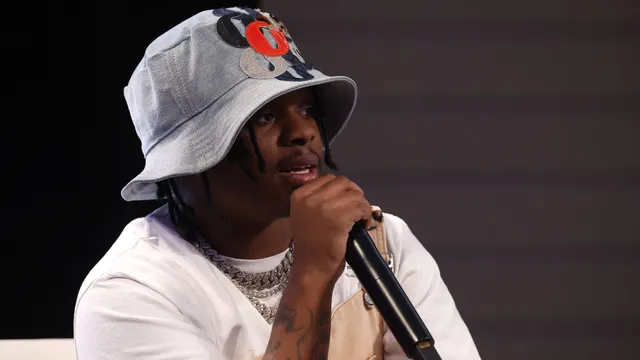Have you ever wondered what made the ’90s such a vibrant decade for hip-hop? The ’90s rappers were not just a time of flannel shirts and slap bracelets; they marked a pivotal moment in the evolution of rap music. From groundbreaking albums to iconic battles, this era gave birth to some of the most influential rappers in history. In this article, we will explore the unforgettable contributions of ‘90s rappers and how they shaped the landscape of music as we know it today.
The Rise of Hip-Hop
Hip-hop emerged in the late 1970s, but it wasn’t until the ’90s that it truly exploded into mainstream culture. Artists like Public Enemy and Run-D.M.C. set the stage, but it was the next generation of rappers who took the genre to new heights. With their unique styles and compelling narratives, these artists appealed to a broader audience, ensuring that hip-hop would become a dominant force in the music industry.
The ’90s rappers were characterized by diversity in sound and style. East Coast and West Coast rappers began to establish their distinct identities, leading to a rich tapestry of talent. This decade saw the emergence of various sub-genres, from gangsta rap to 90s Rappers alternative hip-hop, making it an exciting time for both artists and fans alike.
Notable East Coast Rappers
The East Coast hip-hop scene, particularly centred in New York City, was home to some of the most legendary figures in rap history. Artists like The Notorious B.I.G., 90s Rappers Nas, and Wu-Tang Clan dominated the charts and left an indelible mark on the genre.
The Notorious B.I.G.: The King of New York
Often referred to as Biggie Smalls, The Notorious B.I.G. became an emblem of East Coast hip-hop. His storytelling ability was unparalleled, drawing listeners into his world through vivid imagery and relatable themes. His debut album, Ready to Die, released in 1994, introduced the 90s Rappers world to his unique flow and charisma.
Biggie’s music often reflected the harsh realities of street life, yet he delivered it with a sense of flair that resonated with fans. Tracks like “Juicy” and “Big Poppa” became anthems, and his legacy continues to influence countless artists today.

Nas: The Lyricist
Another titan of East Coast rap is Nas. His debut album, Illmatic, released in 1994, is often regarded as one of the greatest hip-hop albums of all time. Nas’s intricate wordplay and introspective lyrics set him apart from his contemporaries. He tackled themes of poverty, violence, and aspiration, providing listeners with a raw and honest glimpse into his life.
With tracks like “N.Y. State of Mind” and “The World Is Yours,” Nas established himself as a master lyricist. His influence extended beyond the ’90s rappers, as he continued to release thought-provoking music that resonated with fans across generations.
Wu-Tang Clan: The Collective Force
No discussion of ’90s rappers East Coast rap would be complete without mentioning the Wu-Tang Clan. This iconic group, formed in 1992, revolutionized hip-hop with their unique sound and lyrical prowess. Their debut album, Enter the Wu-Tang (36 Chambers), is considered a classic and introduced the world to their signature style.
The Wu-Tang Clan consisted of multiple members, each bringing their individuality to the collective. With tracks like “C.R.E.A.M.” and “Protect Ya Neck,” they showcased their talent while also pushing the boundaries of hip-hop. Their influence can still be seen today, as they continue to inspire new generations of artists.
West Coast Rappers: A Different Vibe
While East Coast rappers were making waves, the West Coast was developing its distinct sound. Artists like Dr. Dre, Snoop Dogg, and Tupac Shakur became household names, showcasing the diversity within the genre.
- Dre: The Architect of G-Funk
Dr. Dre was not just a rapper; he was a visionary producer who played a significant role in shaping the West Coast sound. His album, The Chronic, released in 1992, introduced the world to G-funk, a style characterized by smooth melodies and funk-inspired beats. Dr. Dre’s ability to blend different musical elements created a new sound that captivated audiences.
Collaborating with artists like Snoop Dogg, Dre produced hits that became synonymous with the West Coast lifestyle. Songs like “Nuthin’ but a ‘G’ Thang” and “Let Me Ride” solidified his status as one of the most influential figures in hip-hop history.
Snoop Dogg: The Smooth Talker
Snoop Dogg, with his laid-back demeanour and signature drawl, became a cultural icon in the ’90s. He first gained fame through his collaboration with Dr. Dre on The Chronic and quickly established himself as a solo artist. His debut album, Doggystyle, released in 1993, showcased his unique style and solidified his place in hip-hop.
Tracks like “Gin and Juice” and “Who Am I? (What’s My Name?)” exemplified Snoop’s ability to blend catchy hooks with clever lyrics. His charismatic personality and easygoing flow made him a favourite among fans, ensuring his lasting impact on the genre.
Tupac Shakur: The Voice of a Generation
Tupac Shakur, often simply known as 2Pac, remains one of the most influential rappers of all time. His music transcended mere entertainment, as he used his platform to address social issues and personal struggles. Albums like All Eyez on Me and Me Against the World showcased his lyrical depth and versatility.
Tupac’s ability to articulate the struggles of marginalized communities resonated with listeners worldwide. Songs like “Changes” and “Dear Mama” remain timeless classics, reflecting his profound impact on hip-hop and society at large.
The Rivalries that Defined an Era
The ’90s rappers were not just about the music; they were also marked by intense rivalries that captivated fans and fueled discussions. The East Coast-West Coast feud, epitomized by the rivalry between The Notorious B.I.G. and Tupac Shakur, dominated headlines and shaped the landscape of hip-hop.
The East Coast-West Coast Feud
This rivalry was not just about music; it became a cultural phenomenon. It highlighted the differences in style, sound, and attitudes between the two coasts. While some artists fueled the flames, others sought to bridge the gap and promote unity within the hip-hop community.
Unfortunately, this rivalry culminated in tragedy with the untimely deaths of both Biggie and Tupac. Their murders sent shockwaves through the music industry and left fans mourning the loss of two of hip-hop’s greatest talents.
The Legacy of ’90s Rappers
As we look back on the ’90s, it’s clear that this decade left an indelible mark on hip-hop. The artists of this era not only transformed the genre but also influenced various aspects of popular culture. Their contributions paved the way for future generations, ensuring that hip-hop would remain a powerful voice for social change.
Continued Influence
Today, the impact of ’90s rappers can be seen across the music industry. Modern artists frequently pay homage to their predecessors, drawing inspiration from their styles and lyrical themes. The storytelling techniques and social commentary established by artists like Nas and Tupac continue to resonate with contemporary audiences.
Additionally, the collaborations and sounds popularized in the ’90s laid the groundwork for new sub-genres and styles within hip-hop. The genre has evolved, but the foundation built by these pioneering artists remains strong.
Conclusion: A Timeless Era
In conclusion, the ’90s were a golden era for hip-hop, characterized by the rise of legendary rappers who shaped the genre in profound ways. From the East Coast to the West Coast, artists like The Notorious B.I.G., Nas, Dr. Dre, Snoop Dogg, and Tupac Shakur made lasting contributions that continue to inspire music today.
As we reflect on this transformative decade, we recognize that the stories, struggles, and triumphs of ’90s rappers remain relevant. They not only entertained us but also challenged us to think critically about society and ourselves. So, the next time you hear a classic track from the ’90s rappers, remember the legacy of these artists and the incredible impact they had on hip-hop culture. What are some of your favourite ’90s rap songs, and how do they resonate with you today?




